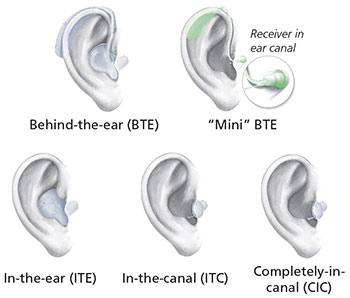This article consists of 16 pages and 3916 words. In order to have full access to this article, email us at thedocumentco@hotmail.co.uk
Ref No: 1325
Project outline

Aim of the study:
Evaluation of the Effectiveness of Hearing Instruments: The aim of this study is to perform a service evaluation on the effectiveness of hearing instruments in reducing the perception of tinnitus within Queen Elizabeth Hospital Audiology Centre (QEHAC). The number of patients being diagnosed with tinnitus is increasing (Action on Hearing Loss, 2011), therefore it is important that we are able to manage this problem effectively to reduce the effect it has on patients’ lives. Wqs`a\Recent literature suggests that this problem can be managed using hearing instruments, specifically hearing aids. Therefore I want to investigate whether this is also the case; whether hearing instruments are effective in helping to reduce the perception of tinnitus.
Tinnitus is defined as a condition in which there are constant or intermittent sounds which patients hear. They differ from person to person, ranging from low, medium and high pitched sounds (BTA, 2014). Tinnitus has a huge impact on patient’s lives, mainly in a negative way. It is associated with depression, failure to interact socially, isolation because patients feel that they cannot get involved with everyday activities, reduced concentration spans, thus effecting patients quality of life (Hear-it, 2015). Therefore it is crucial to be able to manage this effectively, and HA may be the key to this.
According to the British Tinnitus Association, approximately 10% of the population within the United Kingdom (UK) experience from tinnitus, with around 50% of that population stating that it affects their quality of life, with a large majority experiencing from depression and anxiety (BTA, 2015).
In 2015 Evaluation of the Effectiveness of Hearing Instruments, the audiology department saw _____ patients for a tinnitus assessment out of _______ patients seen with the department. Therefore a significant number of patients were diagnosed with both tinnitus and hearing loss. It was suggested that they would benefit from the use of hearing instruments, that specifically aid to help manage this problem. Therefore the hearing instruments assessed within this study will be Hearing aids (HAs).
The main aim of this service evaluation is to assess whether the use of HA in patients with tinnitus can reduce their symptoms of hearing these ‘sounds’ or not. The outcome of this study will assess patient’s satisfaction. Therefore it will assess whether the patient noticed an improvement in their tinnitus symptoms with the HA compared to when they did not have it. Patient satisfaction is very important as this is the main way we can assess whether our management option, in this case, the use of HA has had an impact on patient symptoms. This is vital as we aim to provide patient centred care (Bhanu, 2010). Therefore it is vital that they are the focus of the care we provide and that we can do this to a high standard whilst having a positive impact on the patient’s quality of life and this is the most vital aspect. I aim to have this project completed by April/May 2016.
I will assess patient satisfaction through the use of a questionnaire. The Client Oriented Scale of Improvement (COSI) within every tinnitus assessment appointment to assess the needs of the patient and areas in which they would want improving. This then leads to the knowledge of patients expectations of a hearing aid (Dillion, 2012). Additionally, Tinnitus Functional Index (TFI) will also be carried out again in every tinnitus assessment and completed in the follow up to acknowledge the effectiveness of the management provided and if patients needs have improved (Galster, J, Stevens, K, 2013). Both questionnaires will be found in the appendix.
Details of Participants
Within this study, the main focus is tinnitus patients. As there is a lot of tinnitus patients with QEHAC, random selection of patients will be done. ‘Random selection is how you draw the sample of people for your study from a population’ (William M.K, 2006). In this study, a sample of 50 tinnitus patients will be used. Robertson, 2015 states that undertaking a study with a good sample size, particularly a larger sample size, leads to more ‘accurate statistical analysis’, and the results obtained are much more significant. Patients who have been referred for tinnitus assessments and will be getting management will be selected.
Data Collection and Data Analysis
I will randomly select 50 participants with HAs, among which the TFI questionnaire has been distributed and I will assess from this questionnaire whether patients have stated a positive outcome to their tinnitus symptoms whilst using the HA. I will do this by averaging the mean score for each patient before and after the HA and assessing whether there was an improvement in the patient’s symptoms when using the HA compared or not. The random selection of these patients will ensure that there is no investigator bias (John Milne, 1999). The data I will collect will be qualitative and I will convert this into quantitative data using the average scores in order to perform statistical testing. The disadvantage of this method is that using questionnaires especially TFI is that as it is a scoring…

Recent Comments